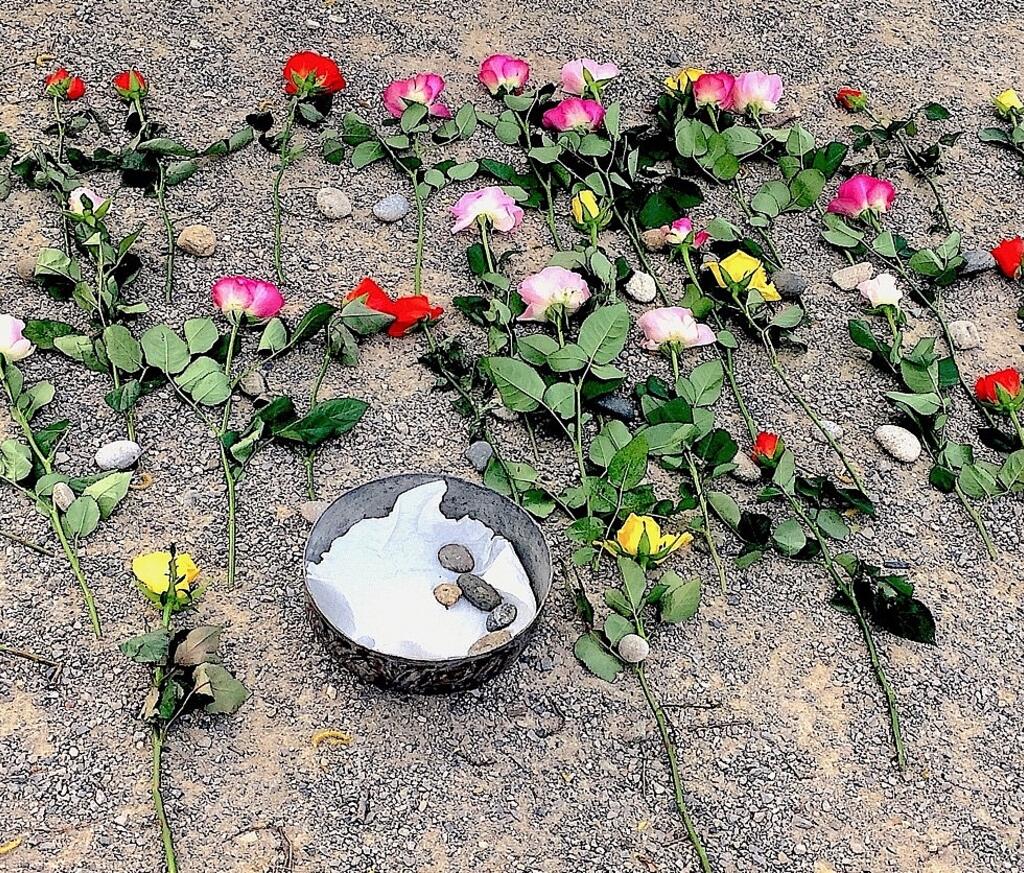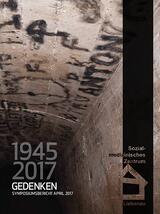Older contributions (untranslated):
1. April 2018
Die Absicht der Nazi-Verbrecher und ihrer Nachfahren in Graz war es, alle Hinweise auf ihre Massenmorde zu verwischen und dem Vergessen anheimfallen zu lassen. Auch wenn namenlose Toten noch unter der Erde liegen, so geben die zahlreichen persönlichen Gegenstände wie Schuhwerk, Kämme Brillen, Zahnbürsten, Kinderspielzeug Zeugnis über ihr Schicksal.
Ansprachen: Stadtrat Robert Krotzer und Rainer Possert, GI
Vorträge:
Dienstag, 16.5.2023 17:00
Jugendzentrum (JUZ) am Grünanger, Theyergasse 22
Anschließend an die Vorträge (ca. 18:30) gehen wir gemeinsam zur Erinnerungstafel in den Maria Caesar-Park, um der NS-Opfer zu gedenken.
Wir freuen uns auf Ihr Kommen!

Am 4. April 1945 verließ der größte Transport Graz mit 6000 -7000 Männern und Frauen in Richtung Mauthausen. Die ersten Transporte ungarischer Juden und JüdInnen des Todesmarsches erreichten das Lager Liebenau bereits zu Ostern 1945. Typhuskranke und Marschunfähige wurden ermordet, rund 200 in der SS Kaserne Wetzelsdorf.
1947 barg man 53 Opfer am Grünanger, 1991 beim Bau des Kindergartens in der Andersengasse zwei Skelette.
Dass die Anzahl der Opfer wesentlich grösser ist, geht aus Feststellungen von Sir Douglas Young, dem Vorsitzenden im „Liebenauer Prozess“ 1947 („dort liegen noch viele unter der Erde“), und von Dr. Gerald Fuchs, Archäologe 2017 hervor: „Es ist eigentlich nur eine Frage der Zeit, bis man diese Plätze findet. Die Schätzungen schwanken zwischen einigen Dutzend und einigen Hundert - wie viele wirklich dort liegen, weiß kein Mensch.“ Diese Vermutungen wurden im Rahmen zweier archäologischer Prospektionen mit Knochenspürhunden 2022 bestätigt, 8 Grabstellen konnten aufgefunden werden, eine Öffnung der Kriegsgräber ist bis jetzt nicht erfolgt. Obwohl in der Nachkriegszeit zahlreiche sogenannte „verfüllte Bombentrichter“ und andere Verdachtsflächen, in denen sich Tote befunden haben könnten, ausgeräumt wurden, bargen die Archäologen 2020 einzelne Skelettteile, auch BewohnerInnen berichteten immer wieder von Knochenfunden nach dem Krieg.
Vom Bundesdenkmalamt vorgeschriebene archäologische Grabungen (Murkraftwerk und Wohnbauten) legten 2017 bis 2021 Barackenfundamente und Bunkeranlagen frei, die wiederum zugeschüttet wurden, da die Stadt Graz unter BM Nagl und VBM Eustacchio kein Interesse an deren Erhaltung hatte. Es wurden hunderte „Artefakte“ und persönliche Gegenstände von Opfern gefunden, die umfangreichen archäologischen Berichte dazu sind bis heute weder von der Energie Steiermark noch von der Stadt Graz veröffentlicht worden.
Im August 2022 konnten wir die Ergebnisse einer archäologischen Grabung publizieren (www.gedenken-liebenau.at) bei der u.a. hundert Schuhreste und andere persönliche Habseligkeiten von vermutlichen Mordopfern gefunden wurden. Nunmehr ist es dem Archäologen Pascale Brandstätter in unserem Auftrag zum ersten Mal in der Lagergeschichte gelungen, die 1991 und 2020 aufgefunden Skelette und Einzelknochen einer forensisch - archäologischen Untersuchung zu unterziehen. 2022 haben wir eine weitere archäologische Untersuchung in Auftrag gegeben, deren Ergebnisse wir bei der Gedenkfeier präsentieren.
Die Absicht der Nazi-Verbrecher und ihrer Nachfahren in Graz war es, alle Hinweise auf ihre Massenmorde zu verwischen und dem Vergessen anheimfallen zu lassen. Auch wenn die namenlosen Toten noch unter der Erde liegen, so geben die zahlreichen persönlichen Gegenstände wie Schuhwerk, Kämme Brillen, Zahnbürsten, Kinderspielzeug Zeugnis über ihr Schicksal.
The killing of around six million of Jewish, Roma, Sinti, homosexual, handicapped people must not be forgotten. The least what the following generations can do is taking responsibility and ensure restoration of historical memory and dignity for the victims.
More food for thought:
Never before has the Austrian Freedom Party FPÖ been infiltrated by student fraternities (Burschenschaften) as strongly as today. Out of 51 delegates to the National Assembly of Austria, 17 are members of German-national associations (33 per cent), among them five out of nine governors of Austrian provinces. They hold an absolute majority in the party executive of the FPÖ.
Austria is said to be home to 4,000 German-national frat members (26 January 2018), experts count 150 corporations and other groupings. Traditional strongholds of these fraternities are the two university cities Vienna and Graz. The importance of linking history with the present day is evident when considering the hatred, agitation and extremism that is no longer only found in the right-wing margins but meanwhile at the very heart of our society.
Extreme-right printed media, such as the “Aula” magazine, right-wing frat members and, increasingly, politicians at the national and regional level have lately contributed to making anti-democratic, xenophobic and antisemitic thoughts socially acceptable and are slowly beginning to undermine democratic core principles.
Therefore, events of remembrance are here to enable people – and especially young people – to discuss the past, urging us to stand up against antisemitism and extremism in any form.
Eleonore Lappin-Eppel, Ungarisch-Jüdische Zwangsarbeiter und Zwangsarbeiterinnen in Österreich 1944/45: Arbeitseinsatz - Todesmärsche -Folgen, Wien 2010
Barbara Stelzl-Marx, Der „Liebenauer Prozess“: NS-Gewaltverbrechen im Spiegel der steirischen Nachkriegspresse, in: Verein zur Förderung justizgeschichtlicher Forschungen und Verein zur Erforschung nationalsozialistischer Gewaltverbrechen und ihrer Aufarbeitung (Hg), Justiz und Erinnerung. Nr. 7/ Februar 2003, S. 2-12.
Barbara Stelzl-Marx, Das Lager Graz-Liebenau in der NS-Zeit. Zwangsarbeiter – Todesmärsche – Nachkriegsjustiz. Graz 2012.
Gabriele Czarnowsky, Überwiesen vom Lagerarzt. Zwangsarbeiterinnen des Lagers Liebenau als Patientinnen der Grazer Universitäts-Frauenklinik und das „Camp Hospital“ der Steyr-Daimler-Puch Werke, Graz in: Historisches Jahrbuch der Stadt Graz, Graz 2018 http://www.leykamverlag.at/shop/files/Leseprobe/Blick-ins-Buch-GeschlechterGeschichten.pdf??XTCsid=1a78c2d25a1342c8d517b20eb93395cc
Heimo Halbrainer, Das Lager in Graz Liebenau, https://de.wikipedia.org/wiki/Zwangsarbeiterlager_Graz-Liebenau

1945 - 2017 Gedenken - Symposiumsbericht
Herunterladen Achtung: Diese Datei enthält unter Umständen nicht barrierefreie Inhalte!
pdf, 4,8M, 01.04.2018
1. April 2018